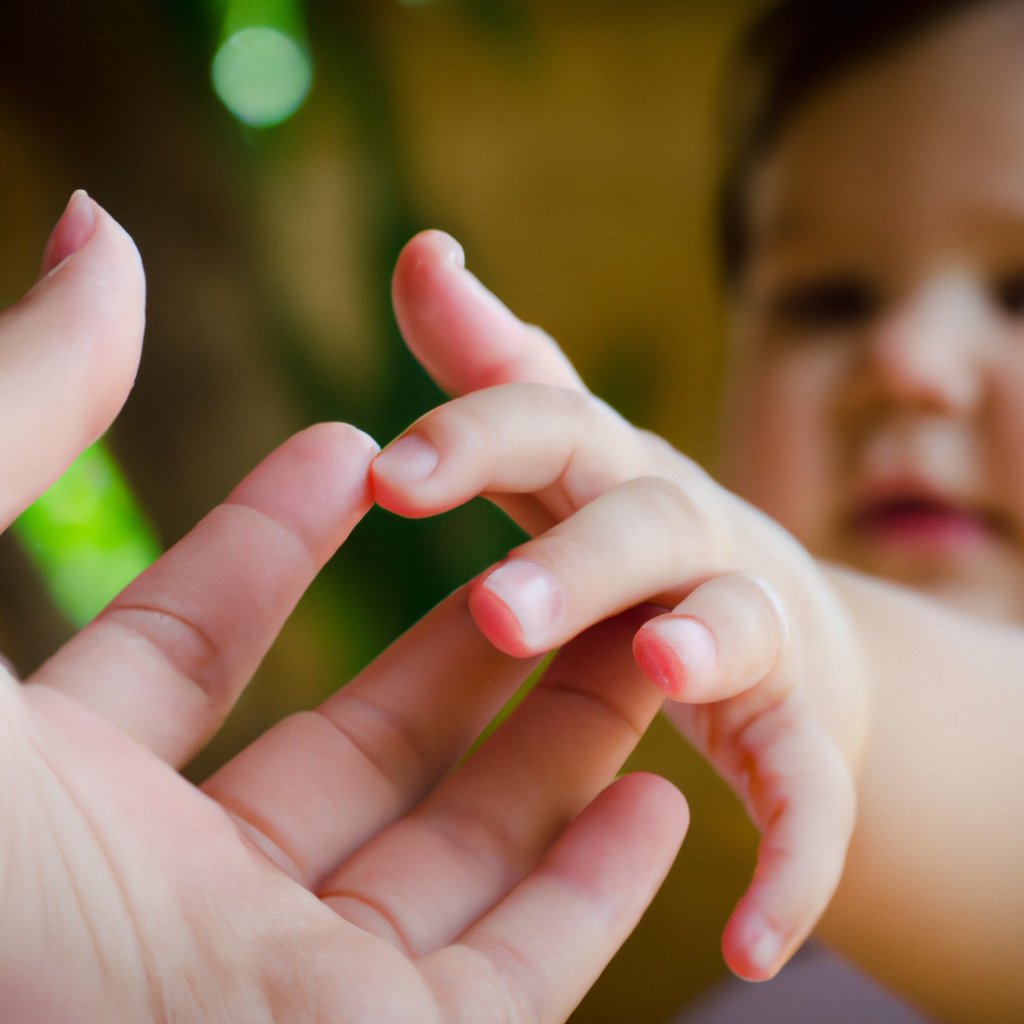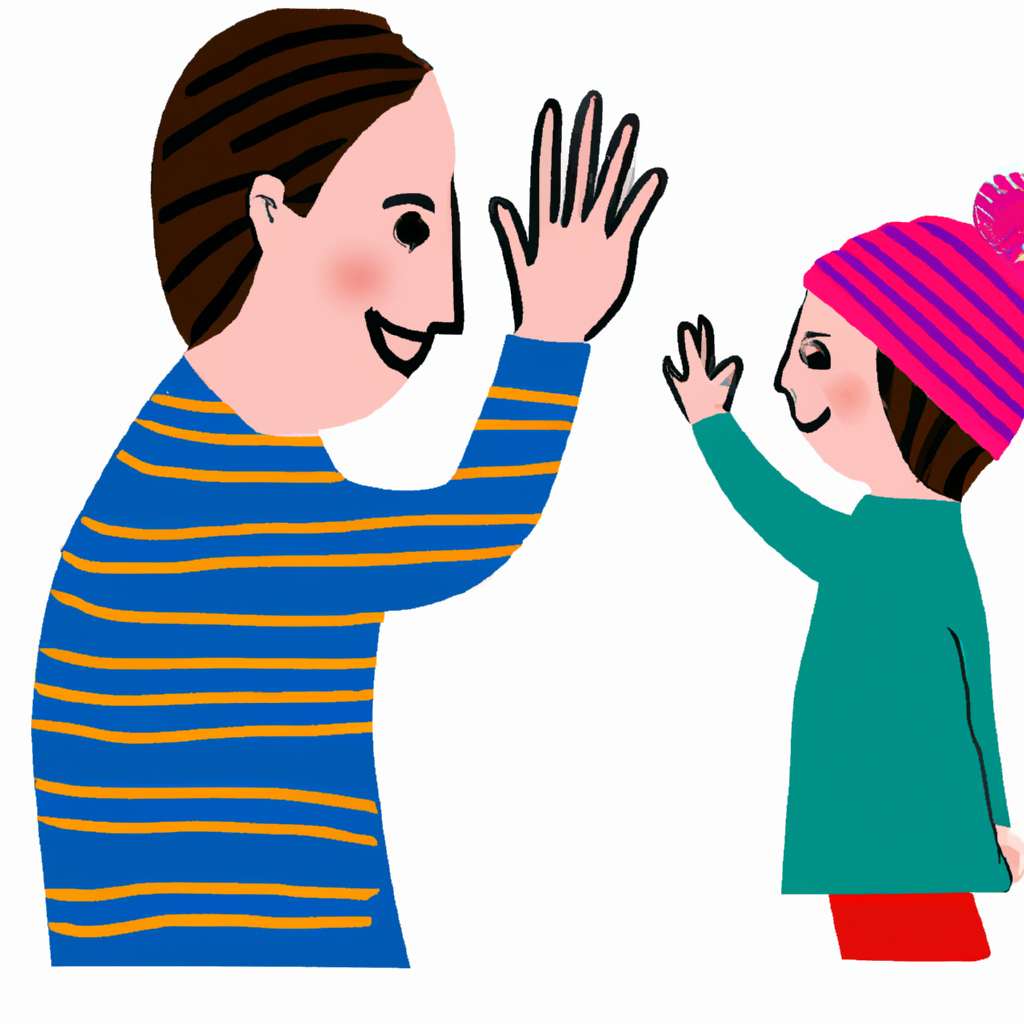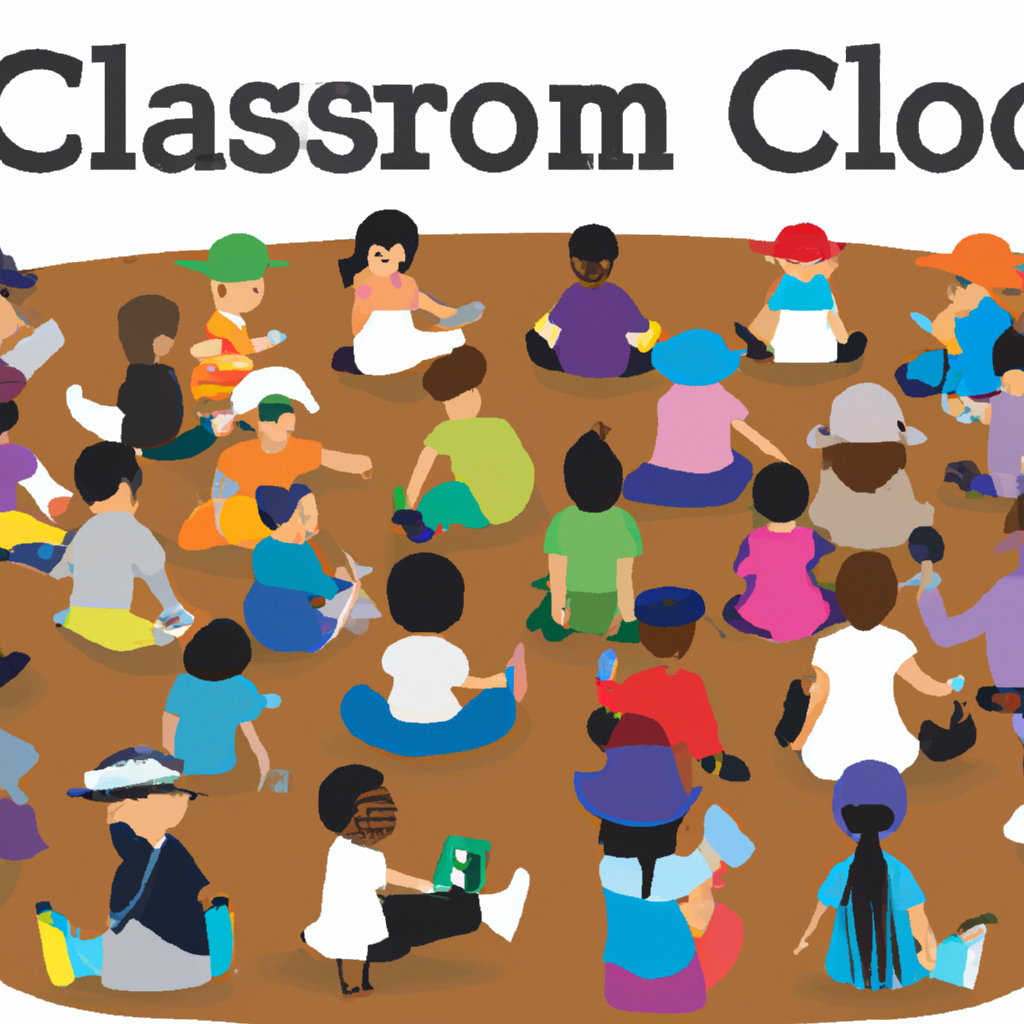Have you ever wondered, “What exactly is **attachment** when it comes to growing kids?” Let me clarify – it plays a crucial role in shaping a child’s growth and well-being. If you want to understand children better, learning about **attachment** is key.
In this article, I will delve into the importance of attachment, define what it means in the context of child development, explore key theories, and examine its impact on social, emotional, cognitive, language, and behavioral development.
By understanding attachment, we can better promote secure relationships and foster healthy development in early childhood settings.
Key Takeaways
- Attachment is crucial for shaping a child’s brain development and overall well-being.
- Different types of attachment styles, such as secure, insecure-avoidant, insecure-resistant, and disorganized, can have long-lasting effects on behavior and relationships.
- Insecure attachment can disrupt the ability to form secure attachments, leading to difficulties in forming and maintaining healthy relationships, struggles with trust, intimacy, and emotional regulation, and lower self-esteem and emotional/behavioral issues.
- Attachment styles influence brain development and can impact emotional well-being and mental health outcomes in the long term.
The Importance of Attachment in Child Development
You need to understand the importance of attachment in your child’s development.
Secure attachment is a fundamental aspect of a child’s emotional and cognitive growth. It plays a crucial role in shaping their brain development and overall well-being.
Research has shown that secure attachment lays the foundation for healthy relationships and emotional regulation later in life. When a child feels safe and loved, their brain releases oxytocin, a hormone that promotes bonding and trust. This helps to wire their brain for positive social interactions and emotional resilience.
Furthermore, attachment influences the development of key areas in the brain, such as the prefrontal cortex, which is responsible for decision-making and emotional regulation. When children have a secure attachment with their caregivers, they are more likely to develop these skills effectively.
On the other hand, a lack of secure attachment can have detrimental effects on a child’s development. It can lead to difficulties in forming relationships, regulating emotions, and even impair cognitive functions.
In conclusion, the importance of secure attachment cannot be overstated. It is the foundation upon which a child’s brain development and emotional well-being are built. Understanding the role of attachment in child development is crucial for providing the nurturing environment necessary for their healthy growth.
Moving on to the next section, let’s explore the definition of attachment in child development.
The Definition of Attachment in Child Development
When it comes to child development, early attachment is of utmost importance. It lays the foundation for a child’s emotional and social development, shaping their relationships and overall well-being.
Understanding the different types of attachment styles, such as secure, insecure-avoidant, and insecure-resistant, helps us comprehend how these early experiences can impact a child’s behavior and relationships throughout their lives.
Additionally, insecure attachment can have long-lasting effects, leading to difficulties in forming healthy relationships, regulating emotions, and even impacting mental health outcomes.
Importance of Early Attachment
The importance of early attachment can’t be overstated; it lays the foundation for healthy relationships later in life. Early bonding between a child and their primary caregiver has a profound impact on their emotional, social, and cognitive development.
When a child forms a secure attachment with their caregiver, they feel safe, loved, and supported, which helps them develop a sense of trust and confidence in the world around them. Securely attached children are more likely to have strong self-esteem, better emotional regulation skills, and healthier interpersonal relationships.
On the other hand, a lack of early bonding or insecure attachment can lead to difficulties in forming and maintaining relationships, as well as issues with emotional regulation and self-esteem.
Understanding the importance of early attachment can help us provide the nurturing environment that children need to thrive.
Now, let’s explore the different types of attachment styles.
Types of Attachment Styles
Take a moment to consider the various types of attachment styles that can shape a child’s early relationships and influence their emotional well-being. Attachment styles are patterns of behavior that infants develop in response to their caregivers’ responsiveness and availability.
These attachment styles are categorized into four main types: secure, insecure-avoidant, insecure-resistant, and disorganized. Securely attached children feel safe and confident to explore their environment knowing their caregiver will be there for them when needed. In contrast, insecurely attached children may exhibit avoidance, resistance, or disorganization in their relationships, which can impact their emotional development.
Research has shown that attachment styles can have a profound impact on brain development, as secure attachment fosters healthy brain functioning and emotional regulation, while insecure attachment can lead to difficulties in emotional regulation and social interactions. Understanding these attachment styles and their effects on brain development is vital for promoting healthy relationships and emotional well-being in children.
Moving forward, let’s explore the impact of insecure attachment on a child’s development.
Impact of Insecure Attachment
You may be wondering how insecure attachment can affect a child’s emotional well-being and relationships. When a child experiences insecure attachment, it can have long-term effects on their development.
One of the key impacts of trauma is that it can disrupt the child’s ability to form secure attachments with others. This can lead to difficulties in forming and maintaining healthy relationships throughout their lives. Insecurely attached children may struggle with trust, intimacy, and emotional regulation. They may also have lower self-esteem and struggle with emotional and behavioral issues.
The impact of trauma and insecure attachment can be far-reaching, affecting various aspects of a child’s life. Understanding these long-term effects is crucial in developing interventions and support systems to help these children thrive.
Now, let’s delve into the key theories on attachment in child development.
Key Theories on Attachment in Child Development
When discussing attachment in child development, it is essential to explore key theories that have shaped our understanding of this phenomenon.
Two prominent theories are Bowlby’s Attachment Theory and Ainsworth’s Strange Situation.
Bowlby’s theory emphasizes the importance of a secure attachment between a child and their primary caregiver.
Ainsworth’s Strange Situation experiment provides a framework for assessing attachment styles, such as secure and insecure attachment.
Bowlby’s Attachment Theory
Bowlby’s Attachment Theory suggests that early interactions between infants and their caregivers play a crucial role in the development of secure attachments. According to Bowlby, the quality of a child’s attachment to their caregiver is influenced by the parent’s attachment style.
Parental attachment styles can be categorized into four types: secure, avoidant, ambivalent, and disorganized. A secure attachment style is characterized by a caregiver who is consistently responsive and available, leading to a child who feels secure and confident in exploring their environment. On the other hand, insecure attachment styles result from inconsistent or neglectful caregiving, leading to children who may have difficulty forming trusting relationships later in life.
Understanding Bowlby’s Attachment Theory and the different parental attachment styles can help us gain insight into the development of secure attachments in children. This knowledge sets the stage for further exploration of Ainsworth’s Strange Situation, a widely used method to assess attachment quality.
Ainsworth’s Strange Situation
After discussing Bowlby’s Attachment Theory, it is important to delve into Ainsworth’s Strange Situation, which further examines the relationship between attachment and social development.
Ainsworth’s Strange Situation is a laboratory procedure used to assess the quality of attachment between an infant and their caregiver. It consists of a series of brief separations and reunions between the child and their caregiver in an unfamiliar environment. This procedure allows researchers to observe the child’s behavior and responses to different situations, providing valuable insights into their attachment style.
-
Secure attachment: characterized by a child who feels secure and comfortable exploring their surroundings, knowing their caregiver will be responsive and available when needed.
-
Insecure-avoidant attachment: characterized by a child who avoids or ignores their caregiver, showing little distress when separated.
-
Insecure-resistant attachment: characterized by a child who is clingy and dependent on their caregiver, displaying high levels of distress when separated.
-
Disorganized attachment: characterized by inconsistent and unpredictable behavior, often resulting from a caregiver who is abusive or neglectful.
-
Ambivalent attachment: characterized by a child who displays a mix of resistant and avoidant behaviors, often due to inconsistent or unpredictable responses from the caregiver.
Understanding Ainsworth’s Strange Situation and the different attachment styles it reveals is crucial in comprehending the impact of early relationships on a child’s social development.
Secure Vs Insecure Attachment
To fully grasp the impact of secure and insecure attachment on social development, it’s important for you to understand the different behaviors exhibited by children in each attachment style.
Secure attachment is characterized by children who feel safe and supported by their primary caregiver. These children are more likely to explore their environment, form secure relationships with others, and exhibit positive social behaviors.
On the other hand, insecure attachment can have consequences for social development. Children with insecure attachment may struggle with trust, have difficulty forming relationships, and exhibit behavior problems.
Understanding these differences in attachment styles allows us to better understand the role of attachment in social and emotional development. It sets the stage for exploring how attachment influences a child’s ability to regulate emotions, form friendships, and navigate social interactions.
The Role of Attachment in Social and Emotional Development
Attachment plays a crucial role in the social and emotional development of children. It is through attachment that children form close and secure relationships with their primary caregivers, which in turn influences their interactions with peers and their sense of self-worth.
Here are some key points to consider:
- Attachment and Peer Relationships:
Children who have secure attachments with their caregivers are more likely to have positive and healthy peer relationships. They are better able to form trusting and reciprocal friendships, as they have a secure base from which to explore and engage with others.
In contrast, children with insecure attachments may struggle with forming close relationships with peers. They may display difficulties in trusting others, experience higher levels of anxiety, and have challenges in maintaining friendships.
- Attachment and Self-esteem:
Secure attachment provides children with a foundation of safety and support, which contributes to the development of healthy self-esteem. When children feel loved and valued by their caregivers, they are more likely to have a positive sense of self and believe in their own abilities.
On the other hand, insecure attachment can undermine a child’s self-esteem. They may internalize negative beliefs about themselves and struggle with feelings of worthlessness or inadequacy.
Understanding the role of attachment in social and emotional development is crucial for promoting healthy child development. By nurturing secure attachments, we can positively impact children’s peer relationships and self-esteem, setting them on a path towards healthy social and emotional well-being.
In the next section, we will explore attachment styles and their impact on child development.
Attachment Styles and Their Impact on Child Development
When it comes to attachment styles and their impact on child development, there are several key points to consider.
Firstly, secure attachment has numerous benefits for children. These include increased self-esteem, better emotional regulation, and stronger interpersonal relationships.
On the other hand, insecure attachment can have negative consequences. This includes difficulties in forming close relationships and higher rates of anxiety and depression.
Secure Attachment Benefits
The benefits of secure attachment include increased emotional regulation and stronger social skills. When a child develops a secure attachment with their primary caregiver, they learn to trust that their needs will be met consistently and responsively. This sense of security allows them to explore the world around them with confidence, knowing that they have a safe base to return to when needed.
The long-term effects of secure attachment are significant. Research has shown that children who experience secure attachment are more likely to develop positive relationships, have higher self-esteem, and exhibit better problem-solving abilities. They also tend to have improved emotional regulation, which means they are better able to manage their emotions and cope with stress. These benefits lay the foundation for healthy development and well-being throughout their lives.
Moving forward, it is important to understand the consequences of insecure attachment.
Insecure Attachment Consequences
One significant consequence of insecure attachment is that children may struggle with emotional regulation and have difficulty forming positive relationships. This can have long-lasting effects on their mental and emotional well-being.
Here are four key consequences of insecure attachment:
-
Impaired emotional regulation: Children with insecure attachment often struggle to regulate their emotions, leading to frequent outbursts, difficulty soothing themselves, and heightened stress levels.
-
Poor social skills: Insecurely attached children may have difficulty forming and maintaining positive relationships with peers and adults. They may struggle with empathy, communication, and cooperation.
-
Low self-esteem: Insecure attachment can negatively impact a child’s self-image and self-worth, leading to feelings of inadequacy and low self-esteem.
-
Increased risk of mental health issues: Research has shown a link between insecure attachment and mental health problems such as anxiety, depression, and behavioral disorders.
To mitigate these consequences, promoting secure attachment through sensitive and responsive caregiving is crucial. By meeting their child’s emotional needs consistently, parents can foster a secure attachment relationship that supports healthy emotional regulation and positive social development.
Parental Influence on Attachment
Promoting secure attachment is crucial for parents to foster healthy emotional regulation and positive social development in their children. The parent-child bond plays a vital role in shaping a child’s attachment style and overall well-being.
When caregivers form a secure attachment with their children, it provides a safe and nurturing environment for them to explore the world and develop a strong sense of self. Securely attached children tend to have better emotional regulation skills, as they feel confident in seeking support and comfort from their caregivers when needed.
Additionally, a secure attachment promotes positive social development, as children learn how to trust others, form healthy relationships, and develop empathy. Understanding the significance of caregiver attachment and actively working to promote secure attachment can greatly benefit a child’s overall development and lifelong well-being.
How Secure Attachment Promotes Healthy Development
When you have a secure attachment with your child, it fosters healthy development. Attachment plays a crucial role in shaping a child’s physical health and academic achievement. Let’s take a closer look at how secure attachment promotes these aspects of development.
| Attachment and Physical Health | Attachment and Academic Achievement |
|---|---|
| Securely attached children tend to have better overall physical health. They are more likely to engage in healthy behaviors such as regular exercise and proper nutrition. | Secure attachment also has a positive impact on a child’s academic achievement. Children with secure attachments are better able to regulate their emotions and have higher levels of self-esteem. This emotional stability helps them focus and concentrate in school, leading to improved academic performance. |
| In addition, secure attachment promotes the development of a strong immune system, reducing the risk of illness and allowing the child to thrive physically. | Furthermore, secure attachment provides a foundation for healthy social relationships, which are essential for successful academic engagement. Children with secure attachments have better social skills and are more likely to collaborate with peers, leading to enhanced learning experiences. |
| Overall, when a child has a secure attachment with their caregiver, it positively influences their physical health and academic achievement, setting them up for success in various areas of life. |
Moving forward, let’s explore the effects of insecure attachment on child development.
The Effects of Insecure Attachment on Child Development
To understand the effects of insecure attachment on your child’s development, it is important to recognize the impact it can have on their emotional well-being and social interactions. Insecure attachment occurs when a child does not experience consistent and responsive care from their primary caregiver. This can lead to long-term consequences that affect various aspects of their lives.
Here are four emotional and social consequences of insecure attachment:
-
Trust issues: Children who have experienced insecure attachment may struggle to trust others, including their caregivers. They may have difficulty forming and maintaining healthy relationships later in life.
-
Emotional regulation difficulties: Insecurely attached children may have trouble regulating their emotions. They may exhibit extreme emotional reactions or have difficulty expressing their feelings appropriately.
-
Low self-esteem: Insecure attachment can negatively impact a child’s self-esteem. They may feel unworthy or unlovable, which can affect their confidence and overall sense of self-worth.
-
Social difficulties: Children with insecure attachment may struggle with social interactions. They may have difficulty making friends, understanding social cues, and forming meaningful connections with others.
These effects of trauma can have long-lasting consequences on a child’s development. Understanding the impact of insecure attachment is crucial in order to provide the necessary support and intervention to promote healthy emotional and social development.
Transition: Now that we have explored the effects of insecure attachment, let’s delve into the relationship between attachment and cognitive development in children.
Attachment and Cognitive Development in Children
Understanding the relationship between attachment and cognitive development in children is crucial in order to support their overall growth and learning. Cognitive development refers to the development of a child’s thinking, problem-solving, memory, and language skills. It is influenced by various factors, including the quality of emotional bonding between the child and their caregiver.
Research has shown that secure attachment, which is characterized by a strong emotional bond between the child and caregiver, positively impacts cognitive development. When children feel safe and supported in their relationships, they are more likely to explore their environment and engage in activities that promote cognitive growth. Securely attached children tend to have better attention spans, problem-solving abilities, and language skills compared to those with insecure attachments.
On the other hand, insecure attachment, which is characterized by inconsistent or neglectful caregiving, can have negative effects on cognitive development. Children who lack emotional bonding with their caregivers may struggle with attention, memory, and language development. They may also have difficulty regulating their emotions, which can further impact their cognitive abilities.
In conclusion, the quality of emotional bonding between a child and their caregiver plays a crucial role in their cognitive development. By fostering secure attachments, we can support children in developing their thinking, problem-solving, memory, and language skills.
Moving on to the next section, let’s explore the relationship between attachment and language development in children.
Attachment and Language Development in Children
Take a moment to consider how the quality of emotional bonding between a caregiver and a child can impact their language development.
Language acquisition is a crucial aspect of a child’s development, and it is heavily influenced by their attachment to their primary caregiver. Here are three ways in which attachment and brain development can impact a child’s language development:
-
Enhanced Brain Development: Secure attachment promotes healthy brain development in children. When a child feels safe and loved, their brain releases chemicals that aid in the formation of neural connections, including those involved in language processing. This enhanced brain development lays a strong foundation for language acquisition.
-
Language Modeling: The quality of attachment between a caregiver and a child affects the language modeling the child receives. Caregivers who engage in responsive and interactive communication with the child provide rich language input. This exposure to a variety of words, sentence structures, and social interactions helps the child develop their language skills.
-
Emotional Regulation: Secure attachment plays a vital role in a child’s emotional regulation. When a child feels secure and loved, they are more likely to feel safe expressing their emotions and engaging in social interactions. This emotional regulation and social engagement create an optimal environment for language development.
Understanding the impact of attachment on language development is crucial in providing optimal care and support for children. As we explore attachment and behavioral development in children, it becomes clear how these aspects are interconnected and influence each other.
Attachment and Behavioral Development in Children
When caregivers provide responsive and interactive communication, they help foster healthy behavioral development in children. Behavioral development refers to the growth and maturation of a child’s behaviors, including their emotional regulation, social skills, and self-control. Research has shown that the quality of the caregiver-child relationship plays a crucial role in shaping children’s behavior.
Attachment styles, which are established early in life, have a significant impact on behavioral development. These attachment styles, such as secure attachment, anxious attachment, and avoidant attachment, influence how children interact with others and regulate their emotions. For example, children with secure attachment tend to exhibit more positive behaviors, have better social skills, and are more resilient in the face of stress. On the other hand, children with anxious or avoidant attachment may display more challenging behaviors, such as aggression or withdrawal.
To better understand the relationship between attachment styles and behavioral development, let’s take a look at the following table:
| Attachment Style | Behavioral Development |
|---|---|
| Secure | Positive behaviors, better social skills, resilience |
| Anxious | Challenging behaviors, heightened emotional reactivity |
| Avoidant | Withdrawal, difficulties in forming close relationships |
Promoting Secure Attachment in Early Childhood Settings
In order to promote secure attachment in early childhood settings, it is important to create an environment that fosters emotional connection and trust between children and their caregivers. This is crucial for healthy early childhood development.
One way to promote secure attachment is through responsive caregiving. Caregivers should be attuned to the child’s needs and respond promptly and appropriately. This helps children develop a sense of security and trust in their caregivers, which lays the foundation for healthy relationships later in life.
Another important aspect is providing a consistent and nurturing environment. Children thrive when they have consistent routines and caregivers who are warm, supportive, and responsive. This consistency helps children feel safe and secure, allowing them to explore and learn about the world around them with confidence.
Creating opportunities for positive social interactions is also key. Encouraging children to engage in cooperative play, sharing, and taking turns helps them develop social skills and learn how to navigate relationships. This can be facilitated through structured activities and playgroups.
Lastly, it is important to involve parents and caregivers in the process. Providing resources and support to parents on attachment and early childhood development can help them understand the importance of secure attachment and how to promote it at home.
Frequently Asked Questions
What Are Some Common Signs of Secure Attachment in Infants?
Some common signs of secure attachment in infants include seeking comfort from the caregiver when distressed, being easily soothed by the caregiver, and showing a sense of security when the caregiver is present.
Secure attachment is important for a child’s overall development as it helps them develop trust, emotional regulation, and positive relationships. It provides a foundation for healthy social and emotional development later in life.
What Are the Long-Term Effects of Insecure Attachment in Adolescence and Adulthood?
The long-term effects of insecure attachment in adolescence and adulthood can have a significant impact on relationships and mental health. When individuals do not experience secure attachment in childhood, they may struggle with forming healthy and trusting relationships later in life.
This can lead to difficulties in establishing and maintaining intimate partnerships, friendships, and even professional relationships. Insecure attachment can also contribute to mental health issues such as anxiety, depression, and low self-esteem.
It is crucial to address and heal from insecure attachment to promote overall well-being.
How Does Attachment Impact a Child’s Ability to Regulate Their Emotions?
Attachment plays a crucial role in a child’s ability to regulate their emotions. It has a profound impact on their social development and self-regulation skills.
When attachment is secure, children feel safe and supported, allowing them to develop healthy emotional regulation strategies.
On the other hand, insecure attachment can hinder their emotional development, leading to difficulties in managing their feelings.
The quality of attachment in early childhood shapes how children understand and express their emotions, impacting their overall well-being.
Can Attachment Styles Change Throughout a Child’s Development?
Attachment styles can change throughout a child’s development. As children grow and experience different relationships and environments, their attachment style can evolve. Factors such as the quality of caregiving, life events, and individual temperament can influence these changes.
For example, a child who was initially securely attached may develop an insecure attachment style due to disruptions in their relationships or traumatic experiences. Understanding these developmental changes in attachment styles is crucial for promoting healthy social and emotional development in children.
What Are Some Strategies That Parents Can Use to Promote Secure Attachment in Their Child?
Promoting secure attachment in a child is crucial for their healthy development. As a parent, I’ve found that being responsive to my child’s needs is key. When they cry, I hold them close and reassure them. This creates a strong bond of trust and security.
Early bonding and attachment set the foundation for their emotional well-being and future relationships. By providing love, comfort, and consistent care, parents can help their child develop a secure attachment that will benefit them throughout their lives.
Conclusion
In conclusion, attachment plays a crucial role in a child’s overall development. It forms the foundation for healthy social, emotional, cognitive, and behavioral development.
While some may argue that attachment is solely dependent on the parent’s actions, it is important to note that attachment is a reciprocal process. Both the child and the caregiver contribute to the development of a secure attachment.
By understanding the importance of attachment and promoting secure attachments in early childhood settings, we can positively impact a child’s future well-being and success.
Mila, a gifted writer with a heart brimming with enthusiasm for child development and playful learning, is the creative force behind the enchanting narratives and insightful articles that grace Toddler Ride On Toys. With a background in early childhood education and a genuine passion for nurturing young minds, Mila weaves words that captivate, educate, and inspire parents, caregivers, and educators.










